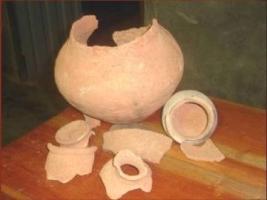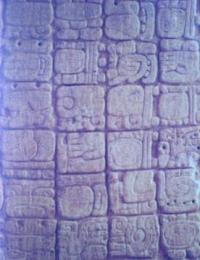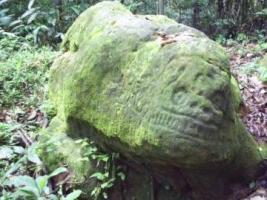Copy Link
Add to Bookmark
Report
Vaginal and Anal Secretions Newsletter 043

ÉÍÍÍÍÍÍÍÍÍÍÍÍÍÍÍÍÍÍÍÍÍÍÍÍÍÍÍÍÍÍÍÍÍÍÍÍÍÍÍÍÍÍÍÍÍÍÍÍÍÍÍÍÍÍÍÍÍÍÍÍÍÍÍÍÍÍÍÍÍÍÍÍÍÍÍÍÍ»
º ÄÄÄÄÄÄÄÄÄÄÄÄÄÄÄÄÄÄÄÄÄÄÄ ßÜ Û ÛßßßÛ Ûßßßß ÄÄÄÄÄÄÄÄÄÄÄÄÄÄÄÄÄÄÄÄÄÄÄÄÄÄÄÄÄÄ º
º ÄÄÄÄÄÄÄÄÄÄÄÄÄÄÄÄÄÄÄÄÄÄÄÄÄ ßÜ Û Û Û ÛÜÜÜÜ ÄÄÄÄÄÄÄÄÄÄÄÄÄÄÄÄÄÄÄÄÄÄÄÄÄÄÄÄÄÄ º
º ÄÄÄÄÄÄÄÄÄÄÄÄÄÄÄÄÄÄÄÄÄÄÄÄÄÄÄ ßÜ Û ÛßßßÛ Û ÄÄÄÄÄÄÄÄÄÄÄÄÄÄÄÄÄÄÄÄÄÄÄÄÄÄÄÄÄÄ º
º ÄÄÄÄÄÄÄÄÄÄÄÄÄÄÄÄÄÄÄÄÄÄÄÄÄÄÄÄÄ ßÛ Û Û ÜÜÜÜÛ ÄÄÄÄÄÄÄÄÄÄÄÄÄÄÄÄÄÄÄÄÄÄÄÄÄÄÄÄÄÄ º
ÌÍÍÍÍÍÍÍÍÍÍÍÍÍÍÍÍÍÍÍÍÍÍÍÍÍÍÍÍÍÍÍÍÍÍÍÍÍÍÍÍÍÍÍÍÍÍÍÍÍÍÍÍÍÍÍÍÍÍÍÍÍÍÍÍÍÍÍÍÍÍÍÍÍÍÍÍ͹
º Vaginal and Anal Secretions Newsletter #0043 º
ÇÄÄÄÄÄÄÄÄÄÄÄÄÄÄÄÄÄÄÄÄÄÄÄÄÄÄÄÄÄÄÄÄÄÄÄÄÄÄÄÄÄÄÄÄÄÄÄÄÄÄÄÄÄÄÄÄÄÄÄÄÄÄÄÄÄÄÄÄÄÄÄÄÄÄÄÄĶ
º Date Released : [07/01/92] Author: The Smurfs (PROBE-X) º
ÇÄÄÄÄÄÄÄÄÄÄÄÄÄÄÄÄÄÄÄÄÄÄÄÄÄÄÄÄÄÄÄÄÄÄÄÄÄÄÄÄÄÄÄÄÄÄÄÄÄÄÄÄÄÄÄÄÄÄÄÄÄÄÄÄÄÄÄÄÄÄÄÄÄÄÄÄĶ
º Mutation Engine Report º
ÓÄÄÄÄÄÄÄÄÄÄÄÄÄÄÄÄÄÄÄÄÄÄÄÄÄÄÄÄÄÄÄÄÄÄÄÄÄÄÄÄÄÄÄÄÄÄÄÄÄÄÄÄÄÄÄÄÄÄÄÄÄÄÄÄÄÄÄÄÄÄÄÄÄÄÄÄĽ
Hello everyone,
following report is provided for your information. More tests are being
conducted and results will be posted soon.
-----------------------------------------------------------------------
22 Jun 92
Mutation Engine Report
Copyright (c) 1992 by VDS Advanced Research Group
All Rights Reserved
P.O. Box 9393
Baltimore, MD 21228
(410) 247-7117
prepared by
Tarkan Yetiser
This report is provided to satisfy the curiosity of the
public. We were approached by some third parties to perform an
analysis on MtE. We would like to share the results of our
analysis with everyone. If you find an error or inaccuracy in
this report, please feel free to contact us. All constructive
criticism is welcome.
TABLE of CONTENTS
I. Mutation Engine and Viruses. . . . . . . . . . . . . . . . . . . 1
II. How to Catch Viruses and MtE-based Viruses . . . . . . . . . . 2
III. Mutation Types and Detection Algorithms. . . . . . . . . . . . 3
IV. Live Tests and Results . . . . . . . . . . . . . . . . . . . . 5
A. Comments on Test Results . . . . . . . . . . . . . . . 5
V. A Simple Message . . . . . . . . . . . . . . . . . . . . . . . 6
I. Mutation Engine and Viruses
We have analyzed the so-called MtE (Mutation Engine by a "Dark
Avenger" from Bulgaria), and sample viruses based on it; namely,
Pogue and Dedicated. We have also conducted tests to examine what
kind of a potential this miscreant has, and collected empirical
data on how popular scanners deal with the MtE. We have also implemented a
little program (CatchMTE) that can recognize MtE-based code using an
algorithmic technique. The program in executable form is available free of
charge as a service to the public. Due to possible misuse, the source code
and a more detailed (at the opcode and bit-mask level) analysis with
decryptor samples and algorithms necessary to detect MtE will be made
available in a limited fashion. Under no circumstances, actual virus
samples will be provided; except the missed samples can be sent to known
anti-viral product developers who wish to enhance their programs.
For those who are not familiar with the MtE, some preliminary
info will be presented first:
MtE is NOT a virus per se, but an object module that can be
linked into a virus to give it polymorphic capabilities. MtE
expects to be called as a routine that can encrypt a certain
portion of code and can generate a suitable decryption routine. It
uses a random number generator to vary each mutation so that it
will not be possible to recognize the new variant by using simple
scanning techniques. The random number generator is not part of the
MtE object module. A sample pseudo-random number generator is
included with the archive Dark Avenger distributes. A virus writer
could also supply his own random number generator.
Though all this may sound ordinary, MtE got so much attention
not because it is just another encryptive virus but because it can
provide even simple viruses with a feature that makes it difficult
to scan for them. MtE is just like a library routine that you link
into your virus and call when needed. It is a little over 2K in an
object module named MTE.OBJ. A person who calls himself "Dark
Avenger" claims to have developed MtE, and distributes it by
uploading to BBSes in Bulgaria. The archive contains a fairly
detailed documentation on how to use MtE, and even includes a
demonstration virus, a non-resident COM infector known as
"Dedicated". Shortly after MtE made its appearance, a modified copy
of this virus called "Fear" is also seen. Why this person is
engaged in such potentially harmful activity, or how he/she gets
away with it is not something we know about. Curious individuals
who would like to learn more about the history of virus production
in Bulgaria and other social as well as technical issues are
invited to read an excellent paper written by anti-virus researcher
Mr. Vesselin Bontchev of Virus Testing Center, University of
Hamburg. The paper is titled "Bulgarian Virus Factory", and it is
available via anonymous FTP. It provides insight into some of the
cultural aspects of the virus underground in Bulgaria. Mr.
Bontchev's contribution to anti-virus research is much appreciated;
otherwise, we probably would have never known what goes on inside
the Bulgarian virus factories.
II. How to Catch Viruses and MtE-based Viruses
Scanning for many known viruses is usually a trivial task.
You disassemble a sample, extract a sequence of bytes that would
exist in each infected executable object, put it into a pattern
matching engine, and then look for that pattern in executable
objects that that virus is known to target. This method proved to
be quite useful in fighting many viruses seen in the wild. Assuming
a carefully chosen scan string, you can find the virus easily
without too many false positives. Not so for polymorphic viruses.
These viruses try to defeat common scanning methods. They keep
their body encrypted to defy analysis, and encrypt the new copy
inserted into an executable object using a different key so that it
will "look" as if a different virus infection has occurred.
However, even these viruses require a plaintext code that will
decrypt the rest of the virus. Scanners can use strings extracted
from the plaintext portion of the virus to identify them. It is
usually necessary to include wildcard bytes (don't-care bytes) to
be able to deal with the varying parts of the decryption routine.
Naturally, false alarms are more likely to occur. MtE is more
advanced than such viruses seen before.
We would like to emphasize that the contents of each mutation
and the corresponding decryption routine MtE generates is far too
variable to extract a simple (or even wildcard) scan string. It is
necessary to analyze the MtE itself as well as many sample
mutations. After that, certain characteristics of the code MtE
generates can be used as telltale signs to detect its presence.
Avoiding false positives while maintaining 100% detection ratio is
quite difficult.
Armed with an 80x86 instruction set guide (we used Turbo
Assembler 3.0 Quick Reference Guide), and a good disassembler (we
used Mr. Zandt's DIS86 available via anonymous FTP), and a few
known viruses based on MtE (Pogue and Dedicated with payload
removed), we analyzed the MtE code, and the mutations generated.
Tests were conducted on a 40Mhz 386 with a 100 meg HD and MS-DOS
5.0, and a 4.77Mhz IBM/XT with a 30 meg HD and PC-DOS 3.3
installed. A simple program that generated decoys (small, fully
functional programs) was used to create a large number of samples.
In the case of Pogue, the virus was allowed to remain resident and
infect each decoy program as it is created. Since the Dedicated
virus is not resident, it was necessary to create decoys first and
then infect them by running the virus (infects in the current
directory). After the tests, we archived the samples and stored
them on floppy diskettes, and removed them from the hard drives of
the test machines.
In the Intel 80x86 architecture, it is possible to express a
computation in very dissimilar ways. This is possible because
certain registers can be substituted in place of another one and
still achieve the same result. For example, you can index an array
by using SI, DI, BP or BX registers. Or you could XOR a certain
value at a given memory location by loading that value in AX, BX,
CX or DX first, and performing the XOR on that register, and then
putting the result back into memory, etc. Even other possibilities
exist. When stepping through elements in an array, you can
increment the index register by ADDing to it, INCing it, or ADDing
and then SUBtracting from it. It should be clear that such
flexibility helps MtE significantly. Of course, variability is
something string scanners do not handle too well, since there are
many combinations to search for.
MtE goes even further than that. The size of the decryption
routine is also variable, making it infeasible to assume certain
things that would hold for many polymorphic viruses. It also sets
up a lengthy sequence of redundant instructions before the
decryptor enters the decryption loop.
For over 90% of the mutations, MtE generates a convoluted
16-bit XOR-type encryption; however, in many cases it uses indirect
ways to apply the XOR mask to a memory value. For example, it
computes the mask, and then gets the value to be decrypted into a
register, applies the mask and put the result back into that memory
location. Besides, memory access is done using many different
instructions such as MOV and XCHG. There are also many redundant
instructions peppered freely throughout the decryptor.
In some cases (5.5%), MtE generates a decryptor with a null
effect. The decryptor does not actually decrypt anything, and the
virus code is in plaintext. The frequency of such cases seems to
depend on the random number generator. It is funny to note that
some popular scanners misidentify such extreme cases where the
virus is not even encrypted. To handle these mutations, it is
sufficient to extract a signature from the MtE itself. It is also
possible to extract one from known MtE-based viruses and identify
the virus directly. At any rate, a scan string from MtE itself
should be used in case a future virus creates a plaintext variant.
We must also mention that even these plaintext mutations
contained a fully working copy of MtE. They successfully propagated
and generated encrypted mutations in future generations. MtE
appears to generate correct code in all cases. The deviation
between new generations started using plaintext parents and new
generations started using encrypted parents was negligible.
III. Mutation Types and Detection Algorithms
MtE generates 4 "types" of mutations. They are as follows:
1. Double-reference (detectable using Method-1) ( ~ 91.0% )
2. SUB-NEG (detectable using Method-2) ( ~ 2.0% )
3. Single-reference (detectable using Method-3) ( ~ 1.5% )
4. Plaintext or no-reference ( ~ 5.5% )
By implementing three algorithms and one scan string for the
plain mutations, it is possible to recognize MtE-based viruses
while keeping false positives to an acceptable level. We have one
such program that achieved 100% hit rate during our tests. Some
others also claim 100% hit rate; and we have tested them as well.
A more detailed analysis of mutation types is not made public
due to possible misuse of such information.
IV. Live Tests and Results
Test #1 Base Virus Name: Dedicated
SCAN 91 F-PROT 2.04 CatchMTE 1.0
by Name (1) 67 69 60
as MtE (2) 933 931 940
misidentified -0 -0 N/A
missed -0 -0 -0
Hit Rate 100% 100% 100%
(1) SCAN91 --> [Mut], F-PROT 2.04 --> Dedicated, CatchMTE --> Dedicated
(2) SCAN91 --> [DAME], F-PROT 2.04 --> MtE, CatchMTE --> MtE-based
Test #2 Base Virus Name: Pogue
SCAN 91 F-PROT 2.04 CatchMTE 1.0
by Name (1) 0 0 56
as MtE (2) 935 936 944
misidentified (3) -65 -61 N/A
missed -0 -3 -0
Hit Rate 93.5% 93.6% 100%
(1) SCAN91 --> N/A, F-PROT 2.04 --> N/A, CatchMTE --> Pogue
(2) SCAN91 --> [DAME], F-PROT 2.04 --> MtE, CatchMTE --> MtE-based
(3) SCAN91 --> [7S], F-PROT 2.04 --> Gotcha, CatchMTE --> N/A
A. Comments on Test Results
It seems that both F-PROT 2.04 and SCAN 91 misidentify some
Pogue mutations that are in plaintext. F-PROT "quickscan" missed
ALL mutations. You are advised to use SECURE scan mode of this
product. The extra speed comes with 0% hit rate on MtE-based
viruses!
F-PROT 2.04 missed three encrypted Pogue mutations. We
examined these samples and found them to be of Type-3, and
detectable using Method-3. The samples worked as expected. One of
those three that were missed was called "suspicious" and guessed to
be a variant of the Gotcha virus. We can only speculate that F-PROT
lacks Method-3 detection algorithm and uses a heuristic in such
cases. Surprisingly, Virx 2.3 missed one of these same mutations.
Due to annoying user interface, we were unable to include Virx 2.3
in our full test suite.
It should be noted that misidentification of 6% of Pogue
mutations is a little alarming. All these misidentified mutations
were found to be working and capable of generating new mutations.
V. A Simple Message
It is dangerous to assume that scanning is adequate since
there are some products that can detect MtE-based viruses 100% of
the time. We identified at least two ways to make MtE less
predictable. Of course, such information will not be disseminated.
However, considering the availability of MtE to the hackers all
around the world, and the "glory" Dark Avenger will enjoy due to
media hype, it's only a matter of time such improvements will be
discovered by irresponsible individuals. Besides, this may start a
new trend among virus writers to create things like MtE. Keeping up
with new virus signatures was hard enough (though manageable), but
keeping up with many mutation engines is not going to be trivial.
Unfortunately, locking up these "mutant engineers" is not a
practical solution, and not even legally possible in many parts of
the world.
The message is clear. The first line of defense against
viruses is NOT using scanners. Although they proved to be very
useful, you are highly encouraged to consider other approaches such
as integrity checkers as a first line of defense. Even the less
sophisticated integrity checkers have a better chance to catch
mutating viruses, long before their developers get a chance to
analyze the virus samples. The reason is that viruses have a
tendency to modify existing code to propagate in most cases. Their
spread can be controlled using a non-virus-specific solution that
concentrates on the main characteristic of most viruses. Such an
approach is not only more cost-effective but also more secure. If
your company still relies on a virus scanner to protect its PC-
based computing resources against viruses, you are walking on thin
ice.
- -------------------------------------------------------------
Regards,
Tarkan Yetiser
VDS Advanced Research Group P.O. Box 9393
(410) 247-7117 Baltimore, MD 21228
e-mail: tyetiser@ssw02.ab.umd.edu
---------------------------------------------------------
Response:
> It seems that both F-PROT 2.04 and SCAN 91 misidentify some
>Pogue mutations that are in plaintext. F-PROT "quickscan" missed
>ALL mutations. You are advised to use SECURE scan mode of this
>product. The extra speed comes with 0% hit rate on MtE-based
>viruses!
True, but Keep in mind that Quick scan is a very primitive
"single-point" scanner - it is fast, but if a virus cannot be found
with a single string, located a fixed offset from the entry point,
Quick will not find it.
Actually, I will probably drop Quick scan in the near future, as the
speed of my secure scan has been steadily improving, and it is now
almost as fast as Quick scan on certain machines.
>F-PROT 2.04 missed three encrypted Pogue mutations. We
>examined these samples and found them to be of Type-3, and
>detectable using Method-3. The samples worked as expected. One of
>those three that were missed was called "suspicious" and guessed to
>be a variant of the Gotcha virus.
It did not guess. Pogue IS a variant of Gotcha, just with MtE added.
My scanner simply picked up the Gotcha signature, probably that part
of the virus was not encrypted. This is also the reason the
"non-encrypted" samples are identified as Gotcha-variants.
> We can only speculate that F-PROT
>lacks Method-3 detection algorithm and uses a heuristic in such
>cases.
Well, you may speculate, of course, but you are wrong :-) I have what
you call a "Method-3", but I guess it is simply not perfect - I would
have to look at those three samples, to determine where the flaw is -
I simply am not going to disassemble the MtE! - I did spend two days
on it, and that is far too much when 3 new viruses arrive every
day....
PS: The heuristics are only used if specifically requested, and will
never report a particular virus, just the presence of virus-like
code...
- -frisk
ÄÄÄÍÍÍÍÍ[ VaS DiSTRiBuTioN SiTeS ]ÍÍÍÍÍÄÄÄ
ÉÍÍÍÍÍÍÍÍÍÍÍÍÍÍÍÍÍÍÍÍÍÍÍÍÍÍÍÍÍÍÍÍÍÍÍÍÍÍÍÍÍÍÍÍÍÍÍÍÍÍÍÍÍÍÍÍÍÍÍÍÍÍÍÍÍÍÍÍÍÍÍÍÍÍÍÍÍ»
º BBS Name Number Baud Sysop Title º
ÇÄÄÄÄÄÄÄÄÄÄÄÄÄÄÄÄÄÄÄÄÄÄÄÄÄÄÄÄÄÄÄÄÄÄÄÄÄÄÄÄÄÄÄÄÄÄÄÄÄÄÄÄÄÄÄÄÄÄÄÄÄÄÄÄÄÄÄÄÄÄÄÄÄÄÄÄĶ
º LiVe WiRE BBS (313)464-1470 14.4 Studmuffin World HQ º
º PoT BBS (313)462-1906 24oo Phreak_Accident World HQ º
º TcH BBS (713)373-4031 14.4 One Meg Cacher Dist. #1 º
º Floating Pancreas (305)551-0311 14.4 Majestic Cockster Dist. #2 º
º Phantasm III (313)884-2617 14.4 Scavenger Dist. #3 º
ÈÍÍÍÍÍÍÍÍÍÍÍÍÍÍÍÍÍÍÍÍÍÍÍÍÍÍÍÍÍÍÍÍÍÍÍÍÍÍÍÍÍÍÍÍÍÍÍÍÍÍÍÍÍÍÍÍÍÍÍÍÍÍÍÍÍÍÍÍÍÍÍÍÍÍÍÍͼ




















